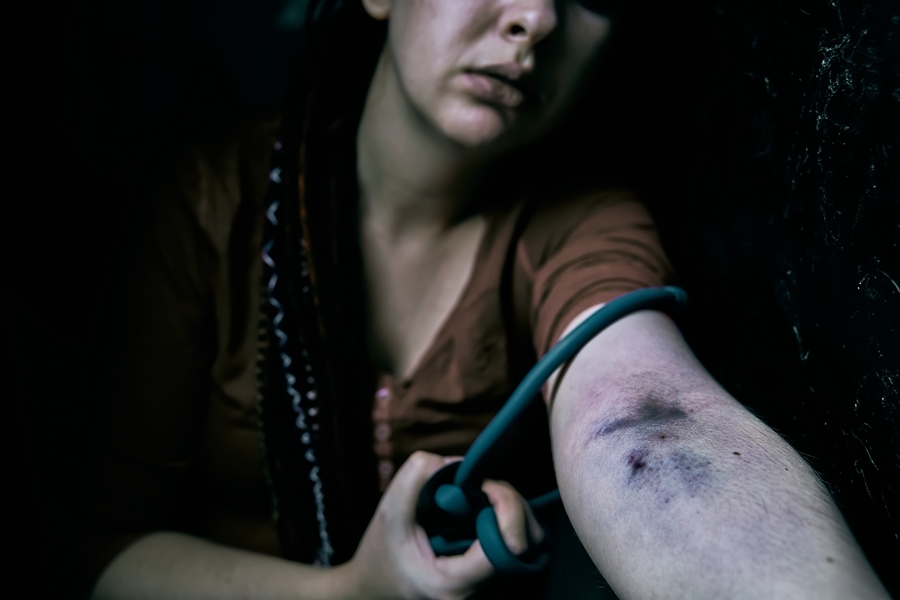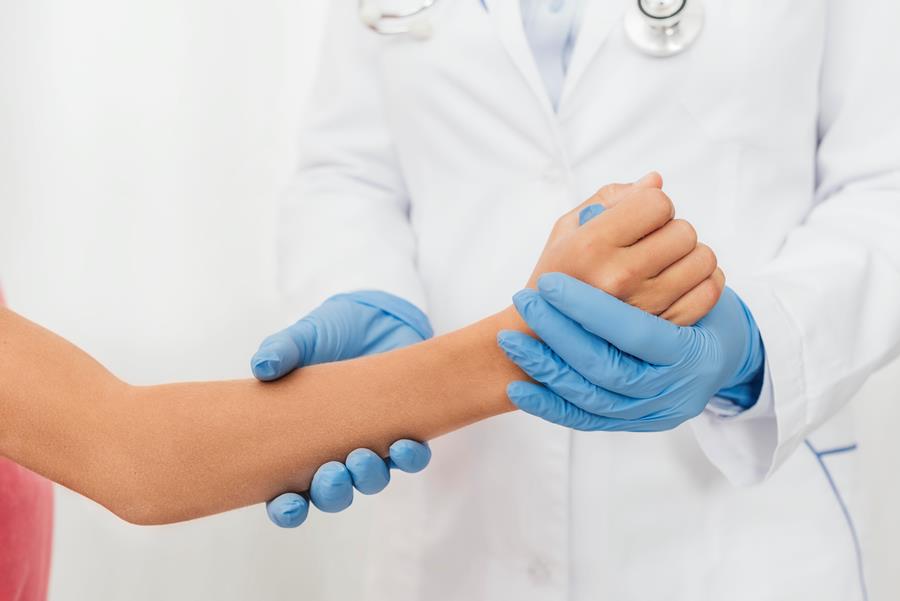The journey through drug addiction is never easy. However, while there are certainly commonly seen and unseen challenges, one frequently overlooked is the phenomenon of collapsed veins.
While it’s a topic that might be uncomfortable to discuss, understanding collapsed veins is crucial for anyone battling addiction, their loved ones, and those seeking to comprehend the physical toll of intravenous (IV) drug use.
In this guide, we’re here to gently explore the complexities of collapsed veins, exploring their causes, symptoms, and the profound impact they can have on health and well-being. Our aim is to provide clear, compassionate information, empowering you to make informed decisions and seek the support you need on the path to recovery.
What is a Collapsed Vein?
A collapsed vein has lost its structural integrity, hindering its ability to effectively transport blood. Imagine a once-sturdy straw becoming kinked and flattened; it can no longer carry fluid smoothly.
Similarly, a collapsed vein struggles to maintain blood flow, leading to a cascade of complications. Of course, every area of the body requires blood flow for oxygen, maintenance, growth, and repair, and without proper blood flow, all manner of problems can arise.
It’s important to distinguish between a collapsed vein and one that’s simply scarred or damaged. While scarring can occur from repeated injections, a collapsed vein represents a more severe state where the vein’s walls have essentially collapsed inward, significantly obstructing blood flow.
The primary culprit behind collapsed veins is, unfortunately, repeated intravenous (IV) drug use.
Each injection, especially with non-sterile equipment or improper technique, introduces trauma to the vein. Over time, this trauma accumulates, causing inflammation, scarring, and, ultimately, collapse.
Other contributing factors include using blunt needles, injecting irritating substances, and frequent injections in the same area.
Causes of a Collapsed Vein in the Context of Drug Addiction
In the context of a drug addiction, a collapsed vein stems from repeated intravenous drug use.
Each time a needle pierces the skin, it creates a tiny wound within the vein. In a healthy individual, these wounds heal quickly. However, for someone struggling with addiction, the constant trauma of repeated injections overwhelms the body’s ability to repair itself.
Several factors compound this problem:
- Non-Sterile Equipment: Sharing needles or using contaminated equipment dramatically increases the risk of infection. Bacteria introduced into the bloodstream can cause inflammation and further damage the veins.
- Improper Injection Techniques: Incorrect needle insertion, missing the vein, or injecting too quickly can all contribute to vein collapse. These practices create additional trauma and increase the likelihood of complications.
- Choice of Drug: Certain drugs, particularly those that are acidic or cause blood vessels to constrict, can be especially harmful to veins. Repeated injection of these substances accelerates the process of vein damage.
- Repeated Injections in the Same Area: The relentless cycle of addiction often leads individuals to inject in the same areas repeatedly, further exacerbating the damage. Over time, accessible veins become scarce, pushing people to seek out increasingly dangerous injection sites. This desperate search for a “good vein” can have devastating consequences, leading to infections, abscesses, and even life-threatening complications.
Signs and Symptoms of a Collapsed Vein

Recognizing the signs of a collapsed vein is crucial for seeking timely help and preventing further complications.
Some of the visible indicators of a collapsed vein include:
- Discoloration: The area around the injection site may appear bruised, darkened, or even black. This is often due to blood leaking from the damaged vein.
- Swelling and Inflammation: The vein itself or the surrounding tissue may become swollen and tender to the touch.
- Hardened Veins: Repeated injections can cause veins to become hardened or cord-like, making them difficult to access.
In addition to these visible signs, there are also physical sensations that can indicate a collapsed vein:
- Pain or Tenderness: The injection site may be painful, even when not being used.
- No Blood Return: When attempting to inject, you may not see any blood flowing back into the syringe, indicating a blockage.
- Difficulty Inserting the Needle: The needle may encounter resistance or feel like it’s hitting a wall, making injection difficult or impossible.
We can’t stress this enough, but if you believe you or a loved one has a collapsed vein, you must seek professional medical assistance as soon as possible. While not typically fatal, it can lead to long-lasting, sometimes even lifelong, health problems.
Health Risks and Complications
The consequences of collapsed veins extend far beyond the inconvenience of finding a suitable injection site. When veins collapse, the body’s intricate circulatory system is disrupted, potentially leading to a cascade of health problems.
Infection
One of the most immediate risks is infection.
Damaged veins provide an entry point for bacteria and other pathogens to enter the bloodstream. This can lead to local infections, such as abscesses or systemic infections that spread throughout the body.
These infections can be severe and, in some cases, life-threatening.
Restricted Blood Flow
When veins collapse, they can no longer efficiently carry blood back to the heart. This can lead to tissue damage, as the affected area is deprived of oxygen and nutrients. In severe cases, this can result in necrosis or tissue death, potentially requiring amputation.
The long-term consequences of collapsed veins can be equally devastating.
Chronic pain, limited mobility, and an increased risk of blood clots are just a few of the potential complications. Furthermore, the constant struggle to find usable veins can lead to further risky behaviors, such as injecting into dangerous areas like the neck or groin.
It’s essential to recognize that the damage caused by collapsed veins often extends beyond the physical realm. The emotional and psychological toll of living with these complications can be immense, contributing to feelings of shame, guilt, and despair.
Again, this underscores the critical importance of seeking help for both the physical and emotional aspects of addiction.
Treatment and Recovery for a Collapsed Vein

While the damage caused by collapsed veins can be severe, it’s important to remember that there is hope for healing and recovery.
The first step is to stop injecting immediately. Continuing to use damaged veins will only worsen the problem and increase the risk of complications. If you or someone you know has a collapsed vein, the next thing to do is to seek immediate medical attention. Whether there are signs of infection or not (fever, pus, severe pain), it’s essential to see a doctor.
Some other measures may also be taken quickly. For example, applying a warm compress can help increase blood flow and reduce inflammation, or elevating the affected limb can also help improve circulation and reduce swelling. However, it is important to remember that each case is different, so medical help is primary.
In the long term, taking care of your veins is crucial. This means avoiding further injections in the affected area and considering professional wound care if necessary.
However, true recovery goes beyond physical healing. It involves addressing the underlying addiction that led to the vein damage in the first place. Thankfully, there are many resources available to help individuals overcome addiction and rebuild their lives.
- Rehabilitation programs: These provide comprehensive treatment, including detoxification, counseling, and relapse prevention strategies.
- Counseling and therapy: Individual or group therapy can help individuals understand the root causes of their addiction and develop healthy coping mechanisms.
- Support groups: Connecting with others in recovery can provide invaluable support and encouragement.
- Harm reduction strategies: While the ultimate goal is abstinence, harm reduction strategies like needle exchange programs and safe injection sites can help minimize the risks associated with drug use.
Of course, you’ve probably heard this before, but recovery is a journey, not a destination. It takes time, effort, and commitment.
That’s why getting the right support and resources is so important. With that, it becomes possible to overcome addiction, heal from the damage caused by collapsed veins, and reclaim your life.
Conclusion
Collapsed veins serve as a stark reminder of the physical toll that addiction can take on the body.
They’re a visible manifestation of the hidden struggles faced by those battling substance abuse. But beyond the physical scars lies the potential for healing and recovery.
Understanding the causes, symptoms, and complications of collapsed veins is the first step toward taking control of your health and well-being.
Whether you’re struggling with addiction yourself or supporting a loved one, remember that you’re not alone.
There are resources available to help you navigate this challenging journey.
If you’re ready to seek help for addiction, reach out to a healthcare professional, addiction specialist, or support organization. They can provide guidance, treatment options, and the encouragement you need to reclaim your life.
Remember, recovery is possible, and it starts with taking that first brave step towards a healthier future.



